Ancient Nomads You’ve Probably Never Heard Of Disappeared From Europe 1,000 Years ago. Now, DNA Analysis Reveals How They Lived
AncientPages.com - How do we understand past societies? For centuries, our main sources of information have been pottery sherds, burial sites and ancient texts.
But the study of ancient DNA is changing what we know about the human past, and what we can know.
A gold earring from a 7th-century female grave at the Rákóczifalva site, Hungary. Hungarian National Museum, CC BY
In a new study, we analysed the genetics of hundreds of people who lived in the Carpathian Basin in southeastern central Europe more than 1,000 years ago, revealing detailed family trees, pictures of a complex society, and stories of change over centuries.
Who were the Avars?
The Avars were a nomadic people originating from eastern central Asia. From the 6th to the 9th century CE, they wielded power over much of eastern central Europe.
The Avars are renowned among archaeologists for their distinctive belt garnitures, but their broader legacy has been overshadowed by predecessors such as the Huns. Nevertheless, Avar burial sites provide invaluable insights into their customs and way of life. To date, archaeologists have excavated more than 100,000 Avar graves.
Now, through the lens of “archaeogenetics”, we can delve even deeper into the intricate web of relationships among individuals who lived more than a millennium ago.
Kinship patterns, social practices and population dynamics
Much of what we know about Avar society comes from descriptions written by their enemies, such as the Byzantines and the Franks, so this work represents a significant leap forward in our understanding.
We combined ancient DNA data with archaeological, anthropological and historical context. As a result, we have been able to reconstruct extensive pedigrees, shedding light on kinship patterns, social practices and population dynamics of this enigmatic period.
We sampled all available human remains from four fully excavated Avar-era cemeteries, including those at Rákóczifalva and Hajdúnánás in what is now Hungary. This resulted in a meticulous analysis of 424 individuals.
Around 300 of these individuals had close relatives buried in the same cemetery. This allowed us to reconstruct multiple extensive pedigrees spanning up to nine generations and 250 years.
Communities were organised around main fathers’ lines
Our research uncovered a sophisticated social framework. Our results suggest Avar society ran on a strict system of descent through the father’s line (patrilineal descent).
Excavations at the cemetery of Rákóczifalva, Hungary in 2006. Hungarian National Museum, CC BY
Following marriage, men typically remained within their paternal community, preserving the lineage continuity. In contrast, women played a crucial role in fostering social ties by marrying outside their family’s community. This practice, called female exogamy, underscores the pivotal contribution of women in maintaining social cohesion.
Additionally, our study identified instances where closely related male individuals, such as siblings or a father and son, had offspring with the same female partner. Such couplings are called “levirate unions”.
Despite these practices, we found no evidence of pairings between genetically related people. This suggests Avar societies meticulously preserved an ancestral memory.
These findings align with historical and anthropological evidence from societies of the Eurasian steppe.
Our study also revealed a transition in the main line of descent within Rákóczifalva, when one pedigree took over from another. This occurred together with archaeological and dietary shifts likely linked to political changes in the region.
The transition, though significant, cannot be detected from higher-level genetic studies. Our results show an apparent genetic continuity can mask the replacement of entire communities. This insight may have far-reaching implications for future archaeological and genetic research.
Future direction of research
Our study, carried out with researchers from the Max Planck Institute for Evolutionary Anthropology in Leipzig, Germany and at Eötvös Loránd University in Budapest, Hungary, is part of a larger project called HistoGenes funded by the European Research Council.
An expert at work harvesting ancient DNA from a human bone. Max Planck Institute for Evolutionary Anthropology
This project shows we can use ancient DNA to examine entire communities, rather than just individuals. We think there is a lot more we can learn.
Now we aim to deepen our understanding of ancestral Avar society by expanding our research over a wider geographical area within the Avar realm. This broader scope will allow us to investigate the origins of the women who married into the communities we have studied. We hope it will also illuminate the connections between communities in greater detail.
Additionally, we plan to study evidence of pathogens and disease among the individuals in this research, to understand more about their health and lives.
Another avenue of research is improving the dating of Avar sites. We are currently analysing multiple radiocarbon dates from individual burials to reveal a more precise timeline of Avar society. This detailed chronology will help us pinpoint significant cultural changes and interactions with neighbouring societies.
The authors would like to acknowledge the contributions to this work of Zsófia Rácz, Tivadar Vida, Johannes Krause and Zuzana Hofmanová.
Provided by The Conversation
This article is republished from The Conversation under a Creative Commons license. Read the original article.
More From Ancient Pages
-
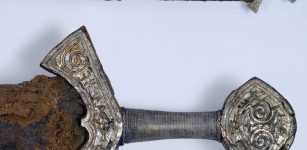 Mystery Of The Langeid Viking Sword And Its Undeciphered ‘Magical’ Inscriptions
Artifacts | Jun 4, 2022
Mystery Of The Langeid Viking Sword And Its Undeciphered ‘Magical’ Inscriptions
Artifacts | Jun 4, 2022 -
 Was Mysterious 2,000-Year-Old Miniature Clay Token Used By Pilgrims Arriving To The Temple In Jerusalem?
Artifacts | Apr 26, 2024
Was Mysterious 2,000-Year-Old Miniature Clay Token Used By Pilgrims Arriving To The Temple In Jerusalem?
Artifacts | Apr 26, 2024 -
 Invention Of Ancient Military Technologies Throughout World History Investigated
Archaeology | Oct 23, 2021
Invention Of Ancient Military Technologies Throughout World History Investigated
Archaeology | Oct 23, 2021 -
 Mystery Of Ancient Sami People Buried Underwater – New DNA Breakthrough
Archaeology | Jun 12, 2019
Mystery Of Ancient Sami People Buried Underwater – New DNA Breakthrough
Archaeology | Jun 12, 2019 -
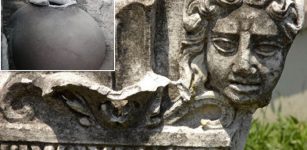 Huge Phitos (Jar) Unearthed In Ancient City Of Prusias ad Hypium, Turkey
Archaeology | Jun 26, 2022
Huge Phitos (Jar) Unearthed In Ancient City Of Prusias ad Hypium, Turkey
Archaeology | Jun 26, 2022 -
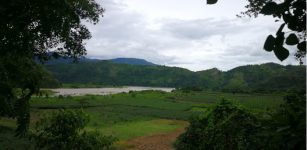 Little Known History Of Amazon’s Ashaninka People Studied By Researchers
Archaeology | Mar 21, 2023
Little Known History Of Amazon’s Ashaninka People Studied By Researchers
Archaeology | Mar 21, 2023 -
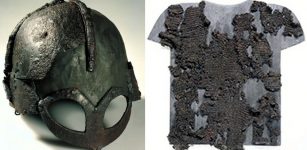 Unique Gjermundbu Helmet – Why Has Only One Viking Age Helmet Been Found In Scandinavia?
Artifacts | Mar 23, 2018
Unique Gjermundbu Helmet – Why Has Only One Viking Age Helmet Been Found In Scandinavia?
Artifacts | Mar 23, 2018 -
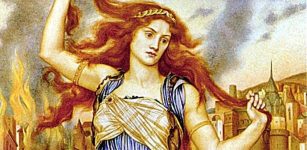 Cassandra: Greek Goddess Who Foretold Cursed Prophecies
Featured Stories | Aug 24, 2016
Cassandra: Greek Goddess Who Foretold Cursed Prophecies
Featured Stories | Aug 24, 2016 -
 An Expert Explains Why Tutankhamun’s Tomb Remains One Of The Greatest Archaeological Discoveries
Archaeology | Nov 2, 2022
An Expert Explains Why Tutankhamun’s Tomb Remains One Of The Greatest Archaeological Discoveries
Archaeology | Nov 2, 2022 -
 Termessos: City Where History And Mythology Marked People’s Daily Lives
Featured Stories | Apr 4, 2025
Termessos: City Where History And Mythology Marked People’s Daily Lives
Featured Stories | Apr 4, 2025 -
 Headteacher’s Sarcophagus Unearthed In Ancient City Of Aigai, Turkey
Archaeology | Jan 25, 2017
Headteacher’s Sarcophagus Unearthed In Ancient City Of Aigai, Turkey
Archaeology | Jan 25, 2017 -
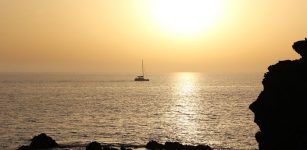 Ephemeral Evidence Of Mediterranean Mobility – Boats, Migration, And The Central Mediterranean Passage In Focus
Archaeology | Dec 23, 2021
Ephemeral Evidence Of Mediterranean Mobility – Boats, Migration, And The Central Mediterranean Passage In Focus
Archaeology | Dec 23, 2021 -
 Did Lead Poisoning Cause The Fall Of The Roman Empire?
Archaeology | Oct 24, 2017
Did Lead Poisoning Cause The Fall Of The Roman Empire?
Archaeology | Oct 24, 2017 -
 Ivriz Relief: 3,000-Year-Old Hittite Relief – Oldest Known Symbol Of Agricultural Fertility In History
Artifacts | Jun 13, 2019
Ivriz Relief: 3,000-Year-Old Hittite Relief – Oldest Known Symbol Of Agricultural Fertility In History
Artifacts | Jun 13, 2019 -
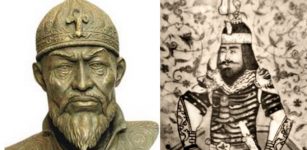 Timur: Brutal Military Leader And His Desire To Conquer But Not To Rule
Featured Stories | Mar 13, 2019
Timur: Brutal Military Leader And His Desire To Conquer But Not To Rule
Featured Stories | Mar 13, 2019 -
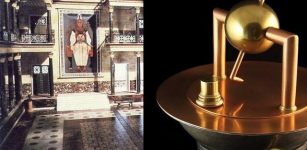 Incredible Ancient Machines Invented By Hero Of Alexandria – An Engineer Far Ahead Of His Time
Featured Stories | Jun 3, 2020
Incredible Ancient Machines Invented By Hero Of Alexandria – An Engineer Far Ahead Of His Time
Featured Stories | Jun 3, 2020 -
 Large Bronze Age Stone May Be Europe’s Oldest 3D Map
Archaeology | Apr 8, 2021
Large Bronze Age Stone May Be Europe’s Oldest 3D Map
Archaeology | Apr 8, 2021 -
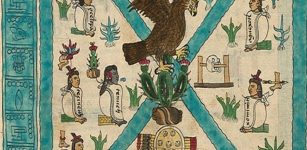 What Is The Codex Mendoza?
Ancient History Facts | Feb 14, 2016
What Is The Codex Mendoza?
Ancient History Facts | Feb 14, 2016 -
 Unusual Archaeological Finds On Small Pacific Islands May Provide Evidence Of Intriguing Mythical Beings
Featured Stories | Oct 24, 2024
Unusual Archaeological Finds On Small Pacific Islands May Provide Evidence Of Intriguing Mythical Beings
Featured Stories | Oct 24, 2024 -
 On This Day In History: Seismologist Charles Richter Was Born – On Apr 26, 1900
News | Apr 26, 2016
On This Day In History: Seismologist Charles Richter Was Born – On Apr 26, 1900
News | Apr 26, 2016



